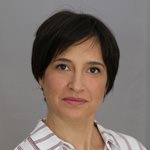MDS
דיון מתוך פורום המטולוגיה
ד"ר שלום -האם ידוע לך על שיטה שבה מחדירים ליקוציטים לגוף כדי להתגבר על מחלה זו?(פחות או יותר ממה ששמעתי והבנתי, אם תוכל להסביר בבקשה יותר בהרחבה על שיטה זו? -כיצד מסומן ליקוציטים בטופס בדיקות דם? בתודה מראש אבי .
שלום אבי לויקוציטים מסומנים בבדיקת דם כ- WBC לגבי שאלתך על "תאים" - קשה לי להבין למה אתה מתכוון. אם אתה מתכוון להשתלת מח עצם - יש נסיונות בהשתלת מח עצם לחולי MDS, אבל זה הליך שמתאים לאנשים יחסית צעירים וגם אז קיימת בעיה של מח עצם מתאים. נסיונות במתן מח עצם מתורמים זרים שאינם מתאימים היו מלווים בתמותה גבוהה - יותר מ- 50% תמותה הקשורה לטיפול ובחלק מהמקרים מעל 60% - ובחזרה של המחלה או הופעה של לאוקמיה. גם נסיונות שנעשו במתן מח עצם מקרובים שאינם מתאימים הביאו לתוצאות דומות. כעת עובדים על נסיון למצוא משלבי טיפול שלא יביאו לתמותה כה גבוהה. מתן תאי אב עצמיים לאחר טיפול כימותרפי מקדים לסילוק תאים לאוקמיים הוא עוד צורה של טיפול נסיוני שעדיין אין לגביו מספיק נתונים. אני מצרף תקציר של מאמר בנושא - אין הרבה עבודות בנושא והתוצאות של העבודה הזו מראות שכ- 60% מהחולים שלא היה להם תורם מתאים קיבלו השתלה של תאים עצמיים לאחר טיפול כימותרפי ולאחר שנכנסו להפוגה בעקבות הטיפול. מתוכם, 27% נשארו חופשיים ממחלה לאחר 4 שנים וכשליש נשארו חיים. הממוצע של אורך החיים בכל הקבוצה (כולל השתלות מתורם מתאים והשתלות עצמיות) היה כ- 13 חודש !!! העבודה מראה שהשתלה עצמית מהוה אופציית טיפול אבל מדובר בנסיונות ראשוניים ויש צורך בקבוצות הרבה יותר גדולות כדי להסיק מסקנות מעשיות. צריך גם לשים לב לגיל החולה. בעבודה זו לא טיפלו במבוגרים מעל גיל 60. באוכלוסיה זו התמותה הטיפולית גבוהה בהרבה. לסיכום: זו אופציה אבל עדיין לא טיפול הבחירה. יתכן שלחולה מסויים זה מתאים, בשים לב למצבו ולמצב המחלה אצלו, ועל כך יש לדבר עם הרופאים המטפלים בו. Blood 2001 Oct 15;98(8):2326-31 Intensive chemotherapy followed by allogeneic or autologous stem cell transplantation for patients with myelodysplastic syndromes (MDSs) and acute myeloid leukemia following MDS. de Witte T, Suciu S, Verhoef G, Labar B, Archimbaud E, Aul C, Selleslag D, Ferrant A, Wijermans P, Mandelli F, Amadori S, Jehn U, Muus P, Boogaerts M, Zittoun R, Gratwohl A, Zwierzina H, Hagemeijer A, Willemze R. University Medical Center St Radboud, Nijmegen, The Netherlands. [email protected] This study investigated the feasibility of allogeneic (alloSCT) and autologous stem cell transplantation (ASCT) as postconsolidation therapy for patients with myelodysplastic syndromes (MDSs) or acute myeloid leukemia after MDS. Patients with a histocompatible sibling were candidates for alloSCT and the remaining patients for ASCT. Remission-induction therapy consisted of 1 or 2 courses with idarubicin, cytarabine, and etoposide, followed by one intensive consolidation course with cytarabine and mitoxantrone. Initially, bone marrow cells were used for ASCT. Subsequently, mobilized blood stem cells were used in an attempt to shorten posttransplantation hypoplasia. With a median follow-up of 3.6 years the 184 evaluable patients showed a 4-year survival rate of 26% and a median survival of 13 months. The remission-induction chemotherapy induced complete remission (CR) in 100 patients (54%). The 4-year disease-free survival (DFS) rate was 29% and the median DFS was 12 months. Twenty-eight of 39 patients (72%) with a donor were allografted in CR-1, including 2 patients who underwent transplantation in CR-1 without a consolidation course. Thirty-six of 59 patients (61%) without a donor received ASCT in CR-1. The 4-year DFS rates in the group of patients with or without a donor were 31% and 27%, respectively. The 4-year survival rates from CR were 36% and 33%, respectively. This large prospective study shows the feasibility of both alloSCT and ASCT. This treatment approach leads to a relatively high remission rate, and the majority of patients in remission received the SCT in CR-1. The ongoing study investigates whether this approach is better than treatment with chemotherapy only.

